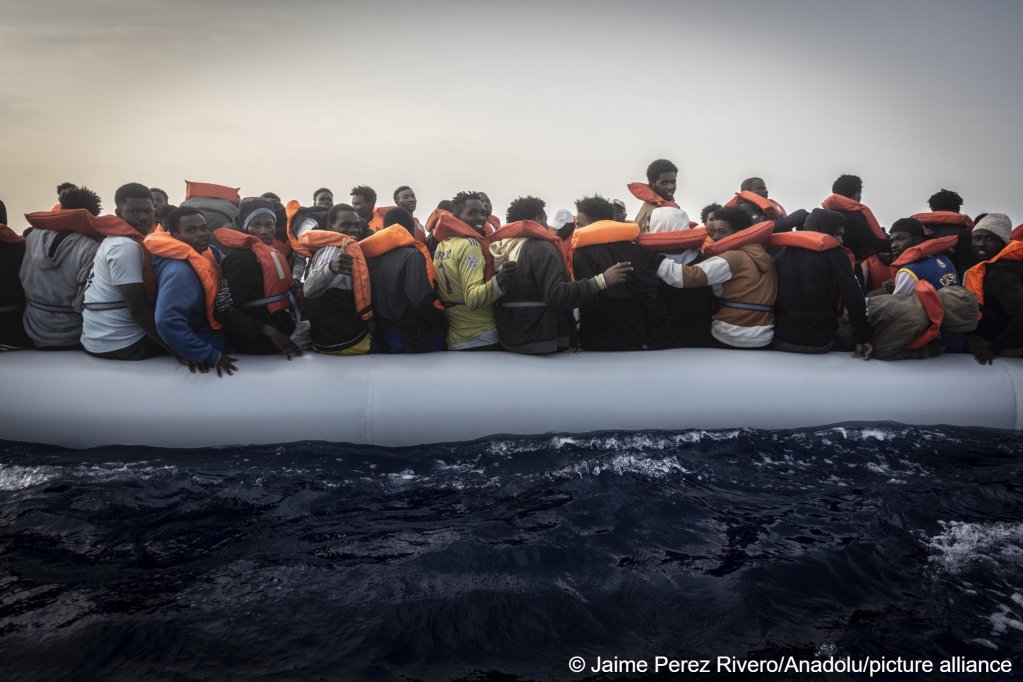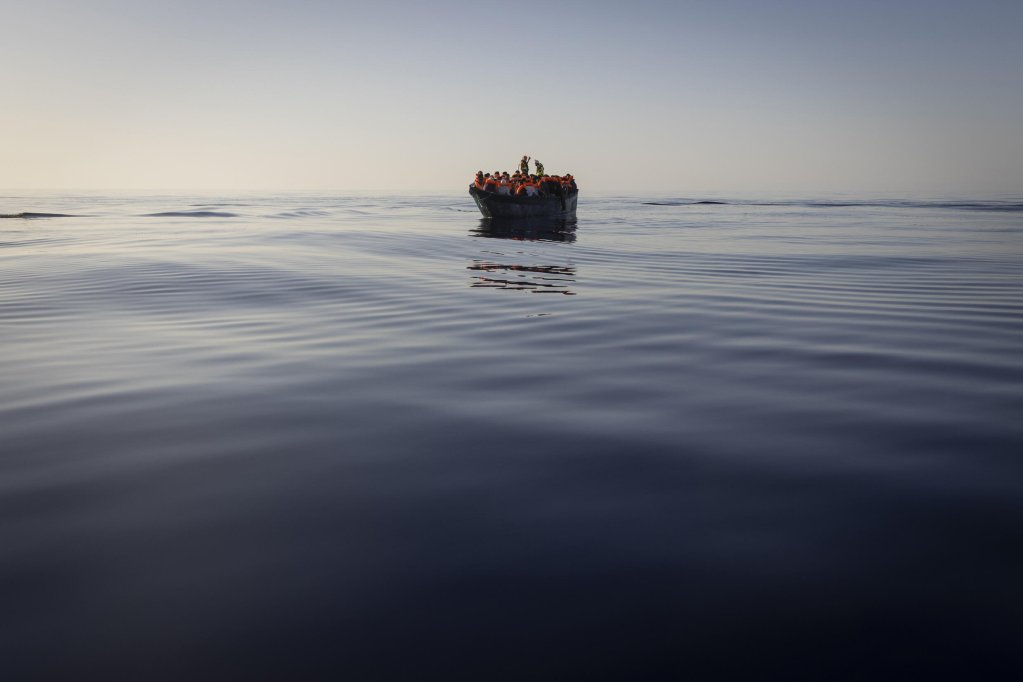The central Mediterranean is one of the most dangerous migration routes towards Europe. More than 25,000 migrants perished on this route since 2014. Can life jackets really help migrants stay safe? InfoMigrants looked into this and spoke to two migrants in Libya about this.
The seas in the Mediterranean can turn quickly. What might look like a calm hot day from land, can whip into a storm or high seas incredibly quickly. Waves, strong currents and sometimes strong winds can all be part and parcel of even the shortest crossings from North Africa towards Europe.
The boats used to cross can also bring high risks for the migrants piling inside. Some are barely seaworthy, others can be soldered together and liable to break up when overloaded, or if hit by a succession of high waves.
Even those who do make the crossing successfully might emerge with burns from the potent mix of engine fuel and seasalt that is often present in the bottom of the boat.
More than 25,247 people have perished on the central Mediterranean route alone (most commonly between Libya or Tunisia and Italy) since 2014, when the UN Migration Agency IOM began registering the numbers of dead and missing on routes towards Europe. The actual number of deaths could be much higher, acknowledges the UN Agency, because it can very difficult to trace and verify drownings and boat sinkings.
Read AlsoBodies believed to be migrants wash up on shores of Egypt, Tunisia
Will a life jacket help?
For many seeking to cross the Mediterranean, a life jacket is not even a possibility. Often, smugglers are not offering them to those they transport. This may be because lifejackets are not available. Or because the smugglers want to cram more people on the boat, and each person takes up less space without a life jacket.
Even for those who are offered, or manage to procure, a life jacket, the jacket may not conform to safety regulations. The jackets may not help to keep you buoyant in the water, should your boat capsize, or you fall in. Some migrants who were provided with a life jacket told us that it was torn and that they worried that it might not help if they were required to use it.
Truly protective life jackets for children are even more difficult to find. For a life jacket to be safe for a child, it needs to be fitted according to their weight. Putting an adult jacket on a child will not help them, neither will putting one designed for a small baby or toddler on a larger child.

Even the best life jacket in the world will not keep you alive for ever. Despite the heat of the air temperatures in the Mediterranean during much of the year, sea temperatures, even in summer, are much cooler and even a fit person and a strong swimmer cannot survive for hours or days in the water, before help may arrive.
Read AlsoOffering dignity to dead migrants in the Canary Islands
The absence of life jackets in Libya
Would-be migrant Sami, aged 27, told InfoMigrants he has already attempted to cross the Mediterranean from Libya to Italy six times, but in vain.
Sami (not his real name) added: "On my last trip, I decided to buy a life jacket myself because I knew how important it was. The smuggler also knew this, but he didn't care. He cared only about the money."
He said, "I paid 30,000 Libyan dinars (roughly €4,811). I was scared to death as I had tried to sail before so I knew how dangerous it was."
Sami said he was speechless when describing the moment, he and others left the house where they were hiding.
"When you leave the smugglers' hide-out place and kick off your journey, you don't think about the sea, drowning, or even dying. Your only concern at that moment is to not be returned to the smugglers' house," he said.
"We were about 95 people crammed into a boat which resembled a can of fish. None of us were wearing life jackets, and we saw floating life jackets near our boat. Some of the life jackets were torn, which were -- for us -- like a sight of death."
Another migrant confirmed that most people on the route did not possess a life jacket.
Read AlsoInternational trafficking ring that brought 3,000 migrants to Italy dismantled
Life jackets 'distributed based on prices'
Ahmed (not his real name) said he also attempted to cross the Mediterranean from Libya to Italy.
"Most of the people with me didn't have life jackets because the smugglers are the only ones responsible for preparing everything before boarding the boat. Even though the smugglers know the journey is dangerous and that life jackets are essential for survival, they distribute them based on prices."
Ahmed explained that life jackets are available in Libya for prices ranging from $20 to $40 (between €17 and €35).

He added, "I couldn't buy one because I didn't have much money. I sneaked onto the boat one dark night without paying. Many people know the danger of the journey, but they take the risk because they have no other choice."
Ahmed added, "The jackets protect, but their quality varies; some jackets are water-resistant, others aren't. Some boats could be at sea for a whole day, while some boats might explode after three days. Migrants who know how to swim might survive until rescue teams arrive."
Sami said, "Most of the people boarding with me on the same boat didn't have life jackets because they didn’t have money. They could barely afford the cost of the trip and food."
He said, "While we were in the sea, our boat was hit with terrifyingly high waves, as if the sea wanted to swallow us up. We heard about many people who died because they didn't wear jackets."
"The life jackets could save lives as they could keep you floating for three hours if you know how to swim. Salted water helps life jackets to float. With life jackets, your chances of survival are much higher," thinks Sami, but he remains daunted about the possibility of another attempt.
This article was translated and edited from Arabic by Mohamed Farhan.
